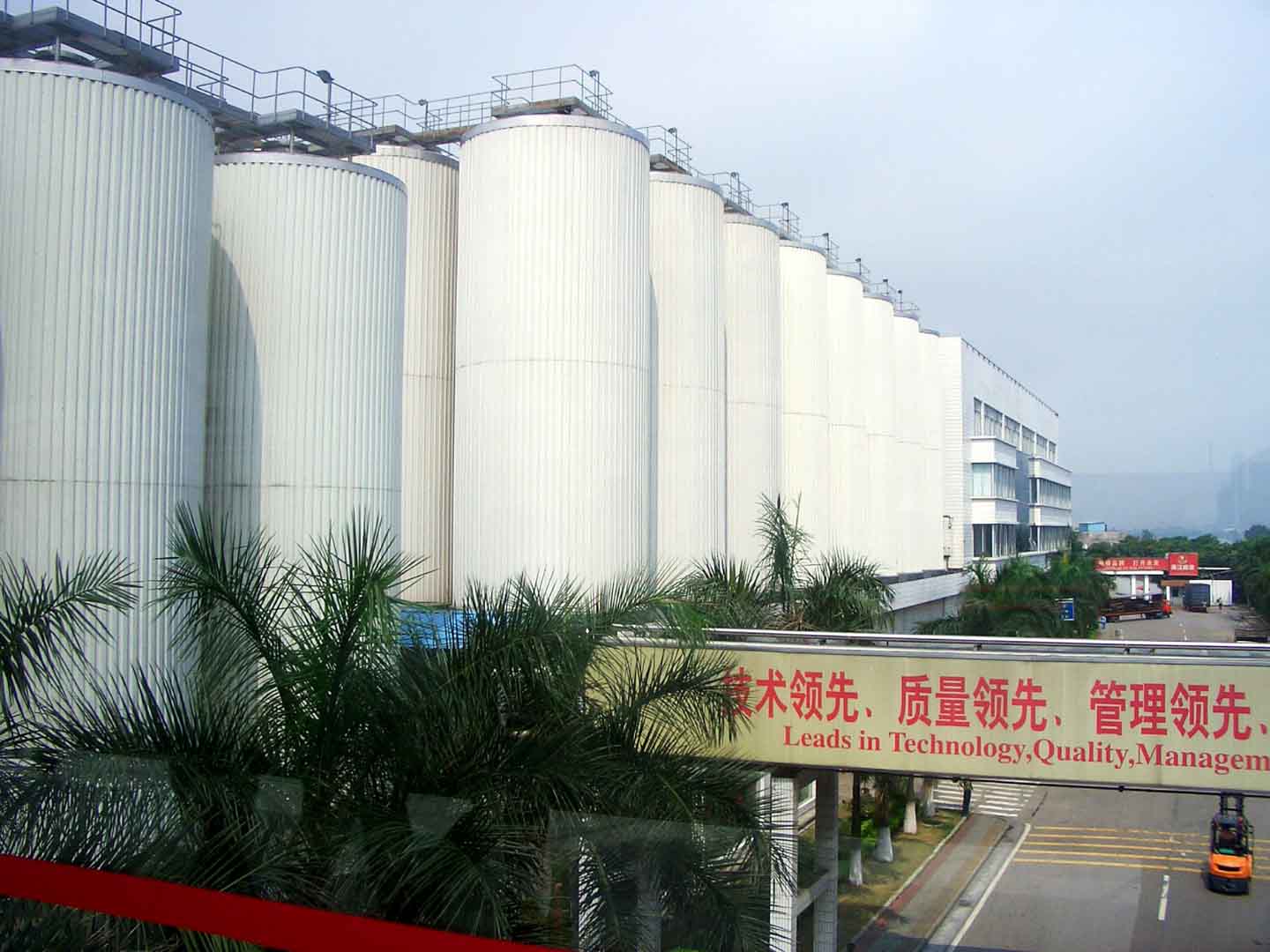Biogas, Guangzhou, China
Goal of this project activity is the installation of a biogas-capturing device and a biogas based electricity generation system in the existing wastewater treatment system at the beer brewery of Guangzhou Zhujiang Brewery Co. Ltd. The beer brewing process causes up to 5 million tons of wastewater each year, which is sent to an anaerobic digester system. Its organic matter is converted into a methane rich biogas, which is used for producing renewable electricity. The project activity leads to CO2-emission reductions by capturing biogas as well as by replacing fossil fuel electricity. Prior to the implementation the waste water treatment of the beer factory had no recovery devices for biogas.
The methane-rich gas was released to the atmosphere, per day more than 10,000 cubic meter of biogas is generated by the anaerobic digesters in the brewery. Besides, a desulfurization facility has been installed by which the toxic hydrogen sulphide (H2S) will be removed. The project showcases an innovative way to use biogas from wastewater for power generation and is the first CDM project in the brewery industry of China.

In biogas facilities, biomass is fermented into biogas in sealed digesters. Biomass may consist of organic waste or dung from cows or other animals. In countries like India or Vietnam, families use the gas from small biogas plants for cooking. This reduces CO2 emissions that would be produced by cooking with wood or charcoal. Biogas plants also prevent methane from escaping into the atmosphere, as is the case when organic waste is stored in an open pit. Instead, the gas is fed from the closed digesters to specific cookers and thus provides an independent and renewable source of energy.
Explore our projects
Biochar for Climate Action, Healthy Soils, and Better Harvests

A certified climate project combined with additional commitment

Expansion of renewable energy generation in Asia

Ceramic water filters save CO2 and improve health

Improved cookstoves worldwide – for better health and cleaner air

A certified climate project combined with additional commitment

Powering access to renewable energy in Africa

A certified climate project combined with additional commitment

Restored ecosystems remove carbon

Turning degraded farmlands into healthy ecosystems

Improved cookstoves - better for health and the environment








